ANIMAL AMBASSADORS
The program animal collection is distinct from the large collection of animals on exhibit at the Virginia Zoo, which are not used in programs (with the exception of some of those in the Zoo Farm). A variety of animals, including a few domestic ones, appear in programs: small and medium-sized mammals, birds, snakes, lizards, turtles and tortoises, frogs, salamanders, and several kinds of land-dwelling invertebrates.
These program animals are commonly presented at Zoo camps and “snoozes” (overnight group programs), and in outreaches, school programs here at the Zoo, performances on the ZooLive! Stage, family programs, special events at the Zoo, and birthday parties. Certain program animals are presented in public areas of the Zoo adjacent to exhibits when weather conditions are amenable.
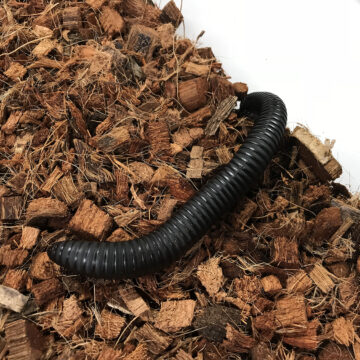
African Giant Millipede
Scientific Name: Archispirostreptus gigas
Found In: Subtropical rainforest floors in western Africa
Size: 4 to 12 inches long
Diet: Detrivore: Diet consists of dead and decaying organic matter such as dead logs, plants and leaves
Threat Level: Least concern
Facts: Although the name millipede means “thousand-feet”, the giant African millipede, which is the largest species, only has about 300 to 400 legs.
Argentine Black and White Tegu
Scientific Name: Tupinambis teguixin
Found In: Northern South America
Size: 2 – 3 feet long
Diet: Omnivore: insects, invertebrates, small mammals, reptiles and birds, fish and sometimes fruit.
Threat Level: Least concern
Facts: Tegus can use their strong tail as a whip to defend off predators.
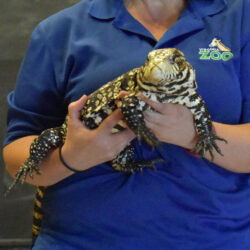

Ball Python
Scientific Name: Python regius
Found In: Savanna grasslands and open forests in West and Central Africa
Size: 3 – 6 feet long
Diet: Carnivore: rodents
Threat Level: Least Concern
Facts: Along the upper jaw, several scales cup inward forming heat sensing pits that can sense infrared or body heat.
Bearded dragon
Scientific Name: Pogona vitticeps
Found In: desert to dry forests and scrublands in Eastern and central Australia
Size: 13 – 24 inches
Diet: Omnivore: plant material, insects, spiders, small invertebrates and some small mammals
Threat Level: Least concern, commonly found in the pet industry
Facts: The “beard” is an expandable throat pouch with spiky scales used to both ward off predators and attackers or for mating displays.
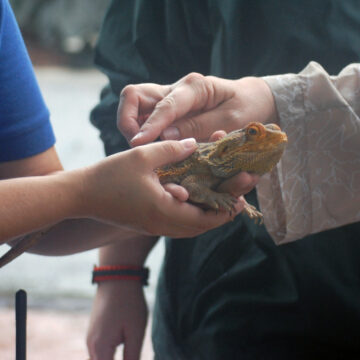

Blue and Gold Macaw
Scientific Name: Ara ararauna
Found In:
Size: 32 – 36 inches, weigh up to 2.7 pounds
Diet: Frugivore: seeds, nuts, fruits
Threat Level: Least concern, habitat degradation is affecting populations
Facts: Macaws have zygodactyl feet – two toes facing forward and two back – helping the birds to grasp onto and easily move around on branches.
Blue Tongue Skink
Scientific Name: Tiliqua sciniodes
Found In: Semi-desert, mixed woodland and scrublands of Australia, New Guinea and Tasmania
Size: Average 13 inches
Diet: Omnivore: Insects, other reptiles, plant material and fruit
Threat Level: Not assessed
Facts: Some scientists believe the blue tongue skink mimics the venomous Death Adder, which is also found in the lizard’s habitat.

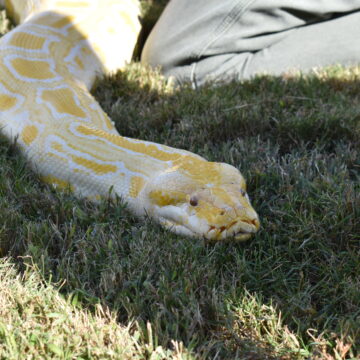
Burmese python
Scientific Name: Python bivittatus
Found In: woodlands, grasslands, swamps, marshes, rocky foothills, river valleys and jungles from Pakistan to Indonesia
Size: average 15 – 20 feet in length and weigh up to 200 pounds
Diet: Carnivore: birds and mammals
Threat Level: Vulnerable: factors contributing to declining populations include habitat loss, poaching for skins and capture for the pet trade
Facts: The Zoo’s burmese python is albino.
Cane toad
Scientific Name: Rhinella marina
Found In: forested areas with local water sources from the Rio Grande Valley in Texas to the Central Amazon to southeastern Peru
Size: 5 – 9 inches long
Diet: Carnivore: ants, beetles, dragonflies, grasshoppers, crustaceans
Threat Level: Least concern
Facts: Cane toads are considered as an invasive species as they were once used for pest control and now outcompete many native amphibians since they have no natural immunity to the cane toad’s toxin that it secretes.
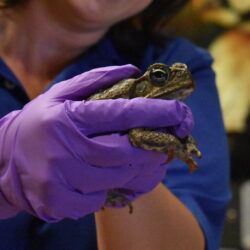
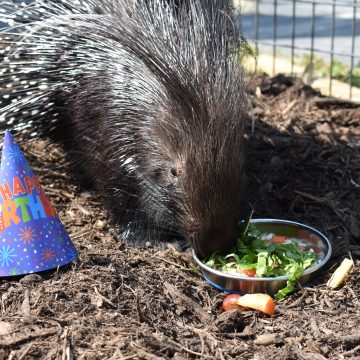
Cape porcupine
Scientific Name: Hystrix cristata
Found In: Hilly, rocky habitats in sub-Saharan Africa, North Africa and Italy.
Size: Grow up to 25 to 29 inches long and weigh from 10 to 25 pounds.
Diet: Root vegetables
Threat Level: There are no major threats to this species. Porcupines have benefited from agricultural development and their destructive feeding habitats have led to them being considered as a problem in some farming areas.
Facts: Cape porcupines are the largest rodent in Africa.
Chickens
Scientific Name: Variety of species
Found In: many locations globally
Size: varies
Diet: Omnivore: plant matter and mealworms
Threat Level: Least Concern
Facts: There are more chickens in the world than any other bird species.


Chinchilla
Scientific Name: Chinchilla lanigera
Found In: barren, arid areas in Western South America including the Andes Mountains in Chile and Argentina
Size: 12 – 21 inches long, weigh up to 1 – 2 pounds
Diet: Herbivore: seeds, leaves, roots and fruit
Threat Level: Endangered. Threats include hunting and trapping to use their fur for clothing
Facts: Chinchillas can live up to 20 years under human care.
Common Boa Constrictor
Scientific Name: boa constrictor
Found In: Mexico, Central America and South America
Size: can reach 5 – 12 feet in length
Diet: Carnivore: small mammals including birds and bats
Threat Level: Not assessed
Facts: They are non-venomous and instead kill their prey through constriction.
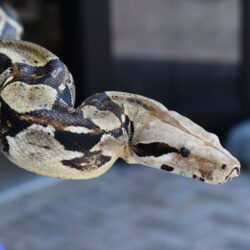

Common Degu
Scientific Name: Octodon degus
Found In: grasslands of central Chile
Size: 6 – 11 ounces
Diet: Herbivore: grasses, plant material, seeds
Threat Level: Least Concern
Facts: Degus sand bathe by marking an area of sand with urine and rolling around in it.
Domestic Rabbit
Scientific Name: Varies by species
Found In: everywhere except Antarctica and Madagascar
Size: 5 – 14 pounds, 14 -16 inches in length
Diet: Herbivore: leaves, grasses, bark, roots, fruit
Threat Level: Not assessed
Facts: Rabbits use the thumping of their back legs as an indication of agitation or territorial behavior.
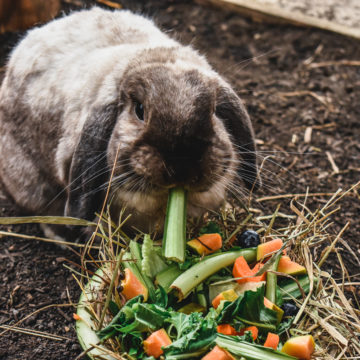

Eastern Box Turtle
Scientific Name: Terrapene carolina
Found In: Deciduous or mixed forests, grasslands in the Eastern United States
Size: 4 – 6 inches in length
Diet: Omnivore – earthworms, snails, slugs, beetles, caterpillars, grasses, fallen fruit, berries, mushrooms, flowers and carrion
Threat Level: Vulnerable
Facts: Box turtles earned their name from their unique ability to fully hide inside the shell, boxing themselves in from predators.
Eclectus Parrot
Scientific Name: Eclectus roratus
Found In: Rainforests in Australia, Solomon Islands, New Guinea and Moluccas
Size: 15 – 19 inches long
Diet: Herbivore: fruits, nuts, seeds and flowers
Threat Level: Vulnerable: Habitat destruction and capture for the illegal wildlife trade are threats to this species.
Facts: This species is sexually dimorphic, meaning males and females look different; males are a vibrant, emerald green with red and blue underwings and an orange beak and females are bright red with dark purple under their wings and a black beak.
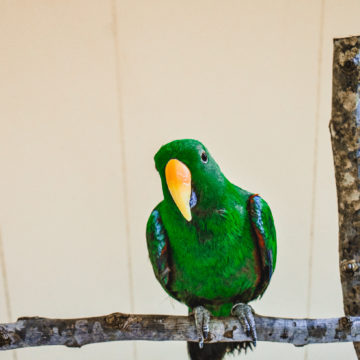
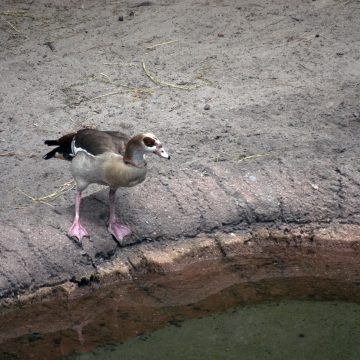
Egyptian Goose
Scientific Name: Alopochen aegyptiaca
Found In: Sub-Saharan Africa countries as well as Northern African countries including Angola, Cameroon, Chad, Congo, Djibouti, Egypt, South Africa, South Sudan, Sudan, Swaziland, Uganda, and Zimbabwe
Size: Grows up to 2.1 – 2.4 inches in length and weighs 2.4 – 8.8 pounds.Read More
Emperor Scorpion
Scientific Name: Pandinus imperator
Found In: hot and humid forests in West African countries such as Nigeria, Togo, Sierra Leone, Ghana and the Congo region
Size: up to 8 inches
Diet: Carnivore: insects and other arthropods, occasionally small vertebrates
Threat Level: Not assessed
Facts: Emperor scorpions give birth to live young, which are born white and will darken as their exoskeleton hardens.
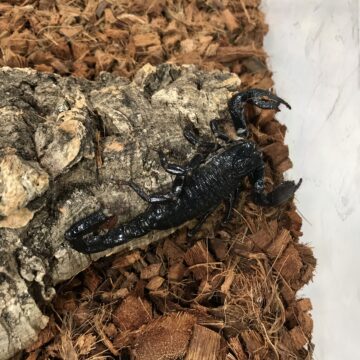
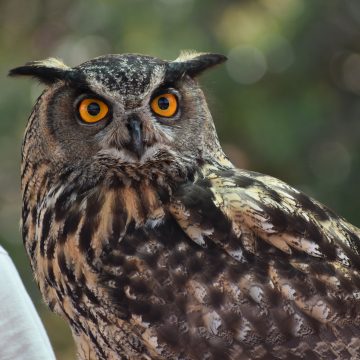
Eurasian Eagle Owl
Scientific Name: Bubo bubo
Found In: Coniferous forests, grasslands, mountainous regions and deserts in Europe, the Middle East, Russia, China and Japan
Size: 2.5 feet, up to 6 pounds
Diet: Carnivore: mice, rabbits, voles, other birds, fish, reptiles and amphibians
Threat Level: Least Concern
Facts: This species looks very similar to the Great Horned Owl, but has a larger body and distinctive orange eyes.
Green Winged Macaw
Scientific Name: Ara chloropterus
Found In: Tropical rainforests, savannas, mangroves in northern and central South America
Size: 26 – 37 inches, 2.75 – 3.75 pounds
Diet: nuts, fruits, berries, seeds and some vegetable material
Threat Level: Least Concern, however this species is under pressure from deforestation and the pet trade
Facts: Under human care, macaws will mimic human vocalizations.
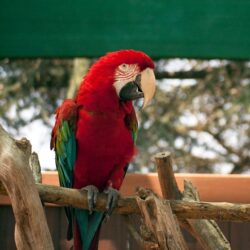

Hedgehog (African Pygmy)
Scientific Name: Atelerix albiventris
Found In: Forests and grasslands in Southern Africa
Size: 7 – 9 inches
Diet: Omnivore: spiders and insects, plant matter and small vertebrates.
Threat Level: Least Concern
Facts: Hedgehogs have a natural immunity to the venom of certain animals and have been known to eat scorpions.
Hognose Snake (Madagascar)
Scientific Name: Leioheterodon madagascariensis
Found In: Mixed grasslands, dry and tropical forests of Madagascar and nearby islands
Size: Can reach 5 – 6 feet in length
Diet: Carnivore: small mammals, lizards, amphibians, birds and eggs
Threat Level: Least Concern
Facts: This species is opistoglyphous, meaning its fangs are in the back of the mouth. They have mild venom, which is not dangerous to humans.
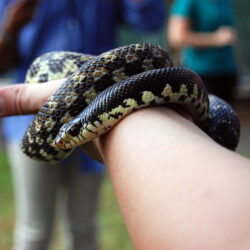

Legless Lizard
Scientific Name: Ophisaurus apodus
Found In: dry areas in southeastern Europe into southwestern Asia
Size: average 2- 3 feet in length
Diet: Carnivore: insects such as grasshoppers and beetles, small mammals and bird eggs
Threat Level: Not assessed
Facts: Although they look like snakes, they are distinguishable from snakes by their ears and eyelids. These lizards do have very tiny legs, measuring about 2mm long, which aren’t usable.
Leopard Gecko
Scientific Name: Eublepharis macularius
Found In: dry and semi-dry deserts in Afghanistan, Iraq, Iran, northwest India and Pakistan
Size: 8 – 10 inches
Diet: Carnivore: scorpions, centipedes, spiders and beetles
Threat Level: Least Concern
Facts: Leopard geckos rarely communicate with sound, but instead communicate with body language such as tongue flicking and tail wagging.

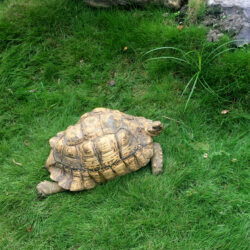
Leopard Tortoise
Scientific Name: Stigmochelys pardalis
Found In: shrubland and grasslands in sub-Saharan Africa
Size: 16 – 28 inches long
Diet: Herbivore: grasses, leaves, berries, flowers including prickly pear.
Threat Level: Least concern
Facts: Retracting their head and feet into their shells often results in a hissing sound which is likely caused by the squeezing of the air from the lungs and around the limbs.
Madagascar Hissing Cockroach
Scientific Name: Gromphadorhina portentosa
Found In: Madagascar/Forest floor of tropical lowland forests
Size: Adults average 2 to 4 inches in length
Diet: Detritivore. Diet consists of decaying plant matter and animal carcasses
Threat Level: Not yet evaluated
Facts: Females lay an egg sack consisting of 15 to 40 cockroach nymphs which is then sucked up inside of her until the nymphs hatch, giving the appearance of live birth
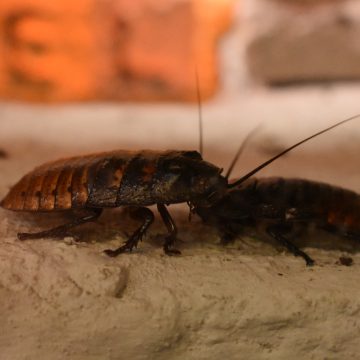
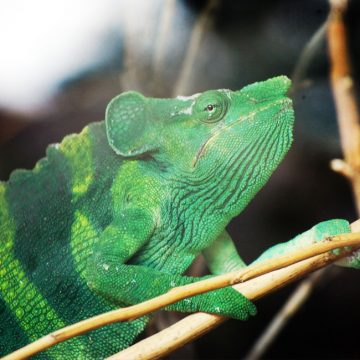
Meller’s Chameleon
Scientific Name: Trioceros melleri
Found In: Malawi, Mozambique, & United Republic of Tanzania
Size: These chameleons grow up to 24 inches and weigh up to 10-18 oz.
Diet: Carnivore: Primarily eats invertebrates, but adults can eat small lizards and hatchling birds.
Threat Level: Least Concern – There is no urgent threat from habitat deformation. However, thousands of animals are exported annually for the pet trade and eventually local populations may not be able to tolerate these export levels.
Facts: Chameleons have a long muscular tongue that can extend farther than the entire length of their body at incredible speeds to reach insects.
Mexican red-knee tarantula
Scientific Name: Brachypelma smithi
Found In: Desert and scrubland habitats in Mexico
Size: Body spans up to 2.5 inches, with a leg span of up to 4 inches
Diet: Tarantulas prey on insects and small animals. They carve burrows into the soil from which they ambush passing prey.
Threat Level: Near threatened – Over-collecting by the pet trade has severely reduced this species in the wild
Facts: Tarantulas must molt (shed their skin) in order to grow. They can also regrow a lost leg during a molt. Fangs are shed with the skin.
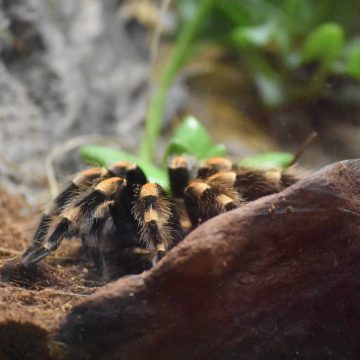
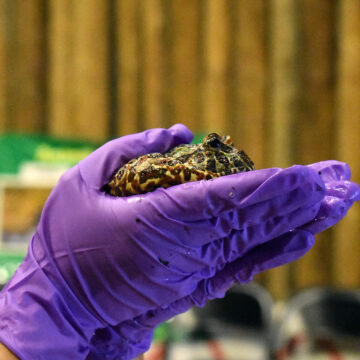
Ornate Horned Frog
Scientific Name: Ceratophys ornata
Found In: tropical mountain rainforests in Argentina, Uruguay and Brazil
Size: males – 4.5 inches, females – 6.5 inches
Diet: Carnivore: insects, rodents, lizards and other frogs
Threat Level: Near threatened: agricultural development, water pollution and soil pollution are threats
Facts: These frogs often jump at an attacker; this combined with its large, gaping mouth, gives it the nickname “Pacman frog”.
Pancake Tortoise (African)
Scientific Name: Malacochersus tornieri
Found In: Kenya and United Republic of Tanzania.
Size: Its shell can grow up to 7 inches in length.
Diet: Herbivore: There diet primarily consists of dry grasses and vegetation
Threat Level: Critically endangered – The greatest threats facing the pancake tortoise is overexploitation for the live exotic animal trade.
Facts: Another common name for the pancake tortoise is the softshell tortoise.
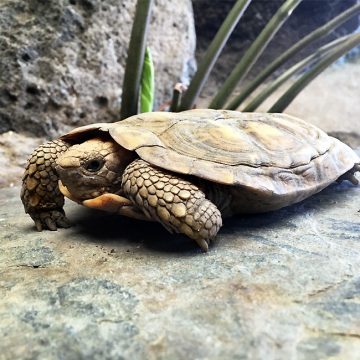
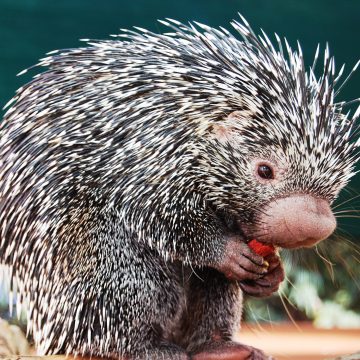
Prehensile-tailed Porcupine
Scientific Name: Coendou prehensilis
Found In: forests in northern Colombia, eastern Bolivia, northern Argentina and eastern Paraguay
Size: 4 – 11 pounds
Diet: Herbivore: bark, buds, fruits, roots, stems, leaves, blossoms, un-ripened seeds, corn and bananas
Threat Level: Least Concern, threat of deforestation is increasing
Facts: These porcupines spend 85 percent of their time in trees. Their prehensile tail acts as an extra appendage to help hold onto branches.
Prehensile-Tailed Skink (Monkey-tailed skink)
Scientific Name: Corucia zebrata
Found In: Solomon Islands/Tropical Rainforests
Size: Adults can reach 32 inches in length
Diet: Herbivore. Diet consists of leaves, flowers, fruit, and shoots.
Threat Level: Not Evaluated. Deforestation for logging is the major threat to this species. Its small range and low birth rate make it vulnerable to rapid population decline.
Facts: Adult skinks have been known to “adopt” orphaned young skinks into their groups.
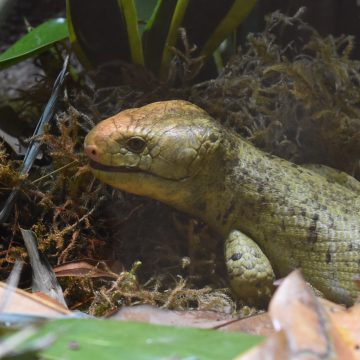
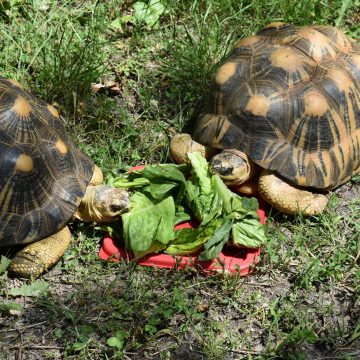
Radiated Tortoise
Scientific Name: Astrochelys radiata
Found In: Madagascar
Size: Female tortoises range in carapace length from approximately 9.5 – 14 inches and males ranged in from 11 – 16 inches.
Diet: Herbivore: Feed predominantly on grasses and in some areas on the alien invasive Opuntia; On occasion they are also known to ingest animal matter
Threat Level: Critically Endangered – Threats to the tortoise’s survival include collection for the illegal pet trade and habitat loss, including deforestation for use as agricultural land, the grazing of livestock, and the burning of wood for charcoal.
Facts: Historically this species has been quite abundant, often being found along roadways and has served as symbol of Madagascar’s south.
Red-tailed Hawk
Scientific Name: Buteo iamaicensis
Found In: United States, Canada, Mexico and Central America
Size: 17 – 26 inches
Diet: Carnivore: primarily small rodents, occasionally rabbits, other birds and reptiles
Threat Level: Least Concern
Facts: Females and males are similar in appearance, but males are 25 percent smaller.
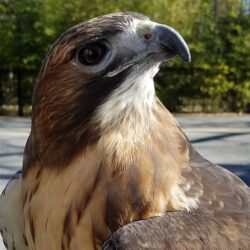
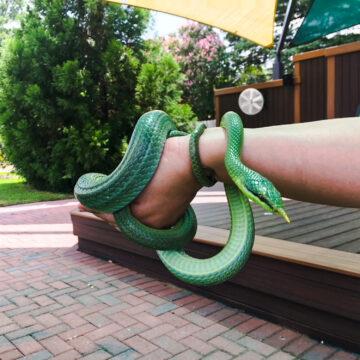
Rhinoceros Snake
Scientific Name: Rhynchophis boulengeri
Found In: subtropical rainforests in northern Vietnam and southern China
Size: averages 39 – 47 inches, up to 59 inches
Diet: Carnivore: small vertebrates such as mice
Threat Level: Least Concern
Facts: The rhino snake gets its name from the scale-covered protuberance on the tip of its snout, however the purpose of it is unknown.
Rose Hair Tarantula (Chilean)
Scientific Name: Grammostola rosea
Found In: Found exclusively in Chile, South America
Size: 5 inch leg span as adults
Diet: Carnivore: bite their prey such as insects, athropods and small mammals, inject venom that liquefies the prey’s insides, then suck the liquid out
Threat Level: Not assessed
Facts: They are equipped with urticating hairs on their abdomen that can can be released. These hairs can cause irritation of the nose and eyes of a potential threat.
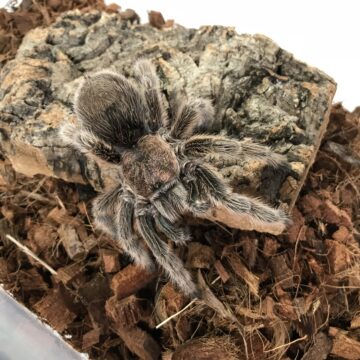
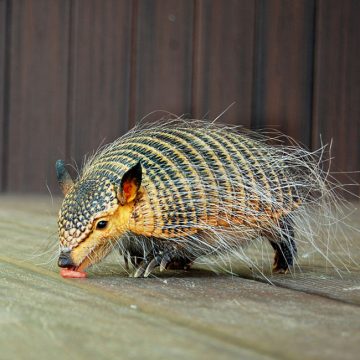
Screaming Hairy Armadillo
Scientific Name: Chaetophractus vellerosus
Found In: Argentina, Plurinational States of Bolivia, Chile, Paraguay
Size: The male armadillo has a length of 12.9 to 15.7 inches and a weight of 19.2 to 46.9 ounces. The female armadillo measures between 10.4 and 16.5 inches and a weight of 9.1 to 39.7 ounces.
Diet: Their diet is mainly composed of beetles, butterfly larvae, plant matter and small vertebrates.
Threat Level: Least Concern – This animal is heavily hunted for its meat and carapace (including for charangos, a musical instrument, and matracas).
Facts: During the cold season, Screaming Hairy Armadillos are mainly active at noon and the early afternoon, while in warm seasons their activity period shifts to the afternoon and night.
Screech Owl (Eastern)
Scientific Name: Otus asio
Found In: eastern North America
Size: 8 – 10 inches
Diet: Carnivore: insects like moths and katydids, crayfish, earthworms, amphibians, reptiles, small mammals like mice and bats, small birds
Threat Level: Least Concern
Facts: Eastern Screech Owls are not migratory.

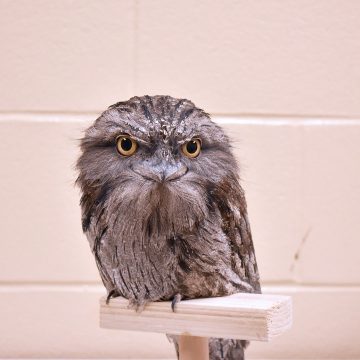
Tawny Frogmouth
Scientific Name: Podargus strigoides
Found In: Forests, scrubland, eucalyptus and acacia woodlands in Australia and Tasmania
Size: 8 – 21 inches, up to 1.5 pounds
Diet: Insectivore
Threat Level: Least Concern
Facts: When disturbed, they stiffen their body to simulate a branch. This behavior is called stumping.
Tenrec
Scientific Name: Echinops telfairi
Found In: subtropical or tropical dry forests, dry savanna, shrubland and lowland grasslands in Madagascar
Size: 5 – 7 inches
Diet: Omnivore: insects and vegetable matter, occasionally small vertebrates
Threat Level: Least Concern
Facts: Tenrecs are closely related to elephants, aardvarks, manatees and hyraxes.
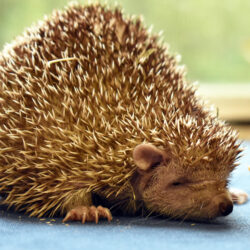
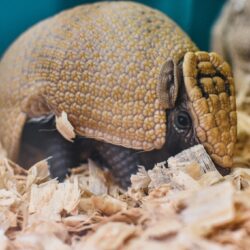
Three-banded Armadillo
Scientific Name: Tolypeutes tricinctus
Found In: Grasslands in South America
Size: 8 – 10.75 inches
Diet: Insectivore: ants and termites
Threat Level: Near Threatened: threats include habitat destruction and hunting for food
Facts: Three-banded armadillos are the only species that can roll into a ball for protection from predators.
Tiger Salamander
Scientific Name: Ambystoma tigrinum
Found In: Forests, grasslands and marshy areas in North and Central America from southeastern Alaska to the edge of the Mexican Plateau.
Size: 6 – 13 inches
Diet: Carnivore: worms, snails, slugs and insects
Threat Level: Least Concern
Facts: The tiger salamander is the largest land-dwelling salamander in North America.
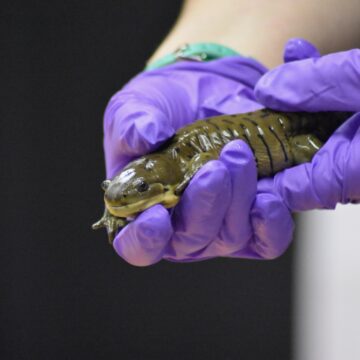
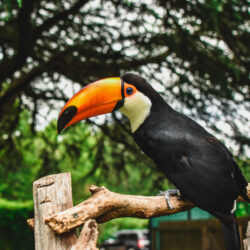
Toco Toucan
Scientific Name: Ramphastos toco
Found In: woodlands, savannas and dry-semi open areas in Argentina, Peru, French Guiana, Bolivia, Paraguay, Suriname and Brazil
Size: average 24 inches
Diet: Frugivore: mainly eat fruits, but opportunistically eat various types of insects and eggs of other birds
Threat Level: Least Concern, the pet trade is a threat
Facts: This species is the largest of the toucans, and has the biggest beak in regard to body size of any bird species.
Two-Toed Sloth
Scientific Name: Choloepus didactylus, Choloepus hoffmanni
Found In: Central and South America/Tropical moist lowland and montane forest
Size: Adults average 18 to 33 inches in length and 9 to 19 pounds in weight
Diet: Herbivore. Diet in their native habitat consists of primarily berries, leaves, small twigs, and fruits; although, they have been known to eat insects or small prey on occasion.
Threat Level: Least Concern. Sloths face increasing pressure due to habitat loss and fragmentation.
Facts: Sloths are made to live upside down and are physically incapable of walking; they crawl when on the ground, but are good swimmers.
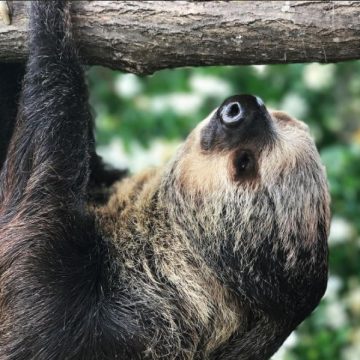
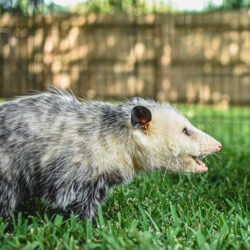
Virginia Opossum
Scientific Name: Didelphis virginiana
Found In: Central and North America from Costa Rica to southern Canada
Size: 4 – 13 pounds, 13 – 22 inches
Diet: Omnivore: vertebrates, invertebrates, plant material, fruits, grains and carrion
Threat Level: Least Concern
Facts: They are marsupials, or a mammal whose young develop and nurse in a pouch on the outside of the body.
Vinegaroon (Whip Scorpion)
Scientific Name: Mastigoproctus giganteus
Found In: humid, moist areas in the southern and southwestern United States and Mexico
Size: 4 – 6 inches
Diet: Carnivore: insects, millipedes, scorpions and terrestrial isopods
Threat Level: Not assessed
Facts: As a defense mechanism, vinegaroons can spray a vinegar-like substance from a gland at the end of their body by the base of the tail.
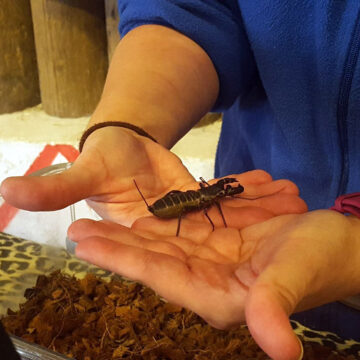
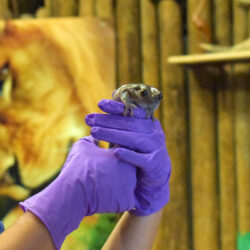
White’s Tree Frog
Scientific Name: Litoria caerulea
Found In: moist forested and seasonally dry or wet areas in Australia and southern New Guinea
Size: 3 – 4.5. inches
Diet: Omnivore: moths, locusts, roaches, small frogs and small mammals that can fit in their mouth
Threat Level: Least Concern
Facts: During the dry season, they cover themselves in a cocoon of sloughed skin and mucus and burrow to keep moist.
Wood Turtle
Scientific Name: Glyptemys insculpta
Found In: eastern Canada and the northeastern United States near moving water sources often in woods, swamps or grassy areas
Size: 6 – 10 inches
Diet: Omnivore: leaves, flowers, fruits, fungi, slugs, snails, worms and insects
Threat Level: Endangered: threats include habitat destruction, collection for the illegal pet trade and increased mortality from road kills
Facts: Among turtles, this species is considered intelligent. A study determined individuals of this species have the learning capacity of rats.
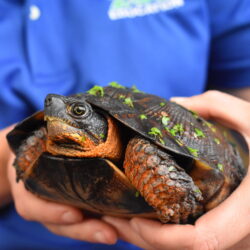
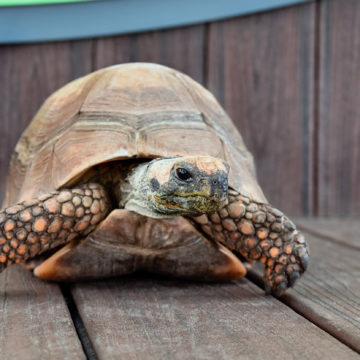
Yellow-footed Tortoise
Scientific Name: Chelonoidis denticulata
Found In: tropical evergreen and deciduous rainforests in South America
Size: Adults average 8 – 12 inches up to 18 inches in length
Diet: Omnivore: leaves, vines, roots, bark, fruits, flowers, fungi, insects, snails and carrion
Threat Level: Vulnerable, hunting is a major threat to this species
Facts: This species is the largest found on the mainland of South America.
AND MANY MORE!